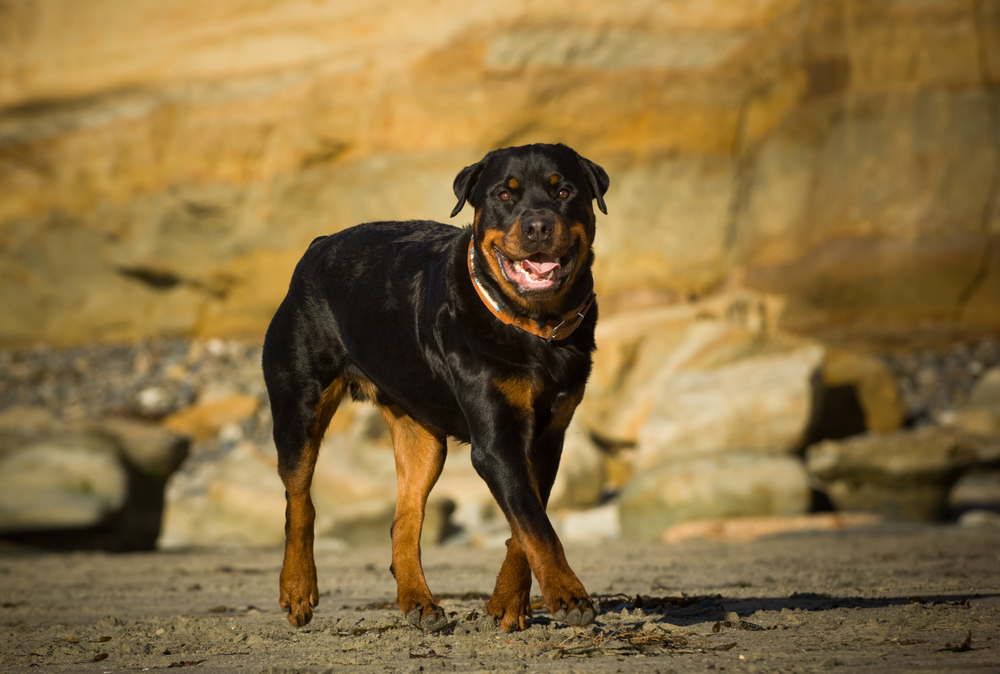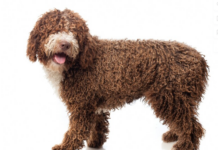Last Updated on August 27, 2024 by Dog Lover
Understanding Rottweiler Size: Are you wondering, “How big do Rottweilers get?” This comprehensive guide provides a clear picture of the Rottweiler’s growth and size, ensuring you’re well-informed as your pup grows.
Rottweilers are known for their impressive size, so knowing their expected growth stages can help you better prepare for their needs and ensure they hit all their size milestones.
Here’s a detailed growth chart to monitor your Rottweiler’s development, along with key factors that influence their size.
Let’s dive into how you can track your Rottweiler’s growth and ensure they are on the right path!
Rottweiler Breed Overview
Rottweilers, commonly known as Rotties, have their roots in the mastiffs of the Roman Empire. Originally bred as working dogs for herding and guarding, their natural protective instincts make them exceptional guard dogs.
Despite their tough exterior, Rottweilers are affectionate and loyal companions. Proper training and socialization will bring out the best in these gentle giants.

Rottweiler Size and Growth Chart
The following chart outlines the standard weight range for Rottweilers at various stages of growth. Keep in mind that about 5% of Rottweilers may fall outside these ranges due to individual biological differences.
Factors such as sex, health, and genetics can influence your Rottweiler’s growth. If you have concerns about your dog’s growth rate, consulting with a veterinarian is advisable.
| Age | Weight Range |
|---|---|
| 8 weeks | 12–20 lbs |
| 3 months | 26–39 lbs |
| 4 months | 35–50 lbs |
| 6 months | 48–85 lbs |
| 9 months | 68–110 lbs |
| 1 year | 74–130 lbs |
| 2 years | 80–135 lbs |
When Do Rottweilers Stop Growing?
Rottweilers grow slowly compared to smaller breeds. They generally stop growing between 18 months and 2 years. By one year, they are near their full height, but they will continue to gain weight for the next year.
After 2 years, a Rottweiler should have reached their full weight, barring health issues or overfeeding.

Factors Affecting Rottweiler Size: Understanding Rottweiler Size
Several factors impact how large a Rottweiler will become:
- Genetics: The size of the Rottweiler’s parents often predicts their future size.
- Diet and Nutrition: Proper nutrition is crucial during the puppy stage. A lack of essential nutrients can result in undersized growth.
- Sex: Male Rottweilers typically grow larger than females. However, their length does not vary significantly.
- Breeding History: Rottweilers bred according to breed standards usually adhere to expected size ranges. Health issues in breeding dogs can affect growth.
- Health Issues: Parasites and diseases impacting nutrient absorption can also influence growth.
Ideal Diet for Rottweilers
Rottweilers are prone to obesity, especially if they are not exercised properly or overfed. Consult your vet to determine the appropriate caloric intake based on your dog’s age, weight, and activity level.
Ensure your Rottweiler’s diet includes at least 22.5% protein from high-quality sources. For puppies, a diet formulated for large breeds is essential to support healthy joint growth and avoid bone issues.

How to Measure Your Rottweiler
Accurate measurements help monitor your Rottweiler’s growth. Measure from the ground to the highest point of their shoulder blade to determine their height. To find their length, measure from the base of the neck to the base of the tail.
Conclusion: Understanding Rottweiler Size
Understanding your Rottweiler’s growth stages is crucial for their well-being. By following the growth chart and considering factors like diet and health, you can ensure your Rottweiler develops as expected. If your dog’s growth seems abnormal, consult a veterinarian for advice.
Enjoy your journey with your growing Rottweiler!
Sources:

















